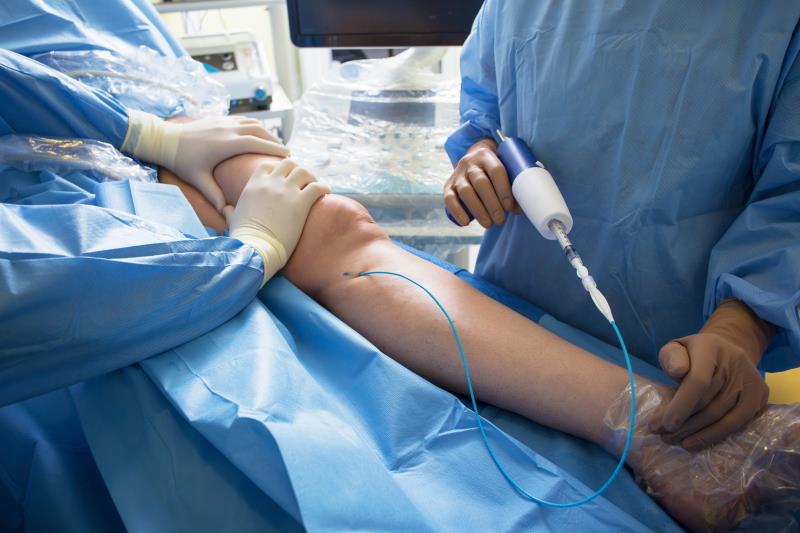
A cyanoacrylate endovenous ablation device for varicose veins effectively blocks refluxing truncal veins with minimal periprocedural pain in Asian patients with chronic venous insufficiency, according to data from ASVS*.
The VenaSeal Closure System is a nonthermal, nontumescent (NTNT) endovenous ablation device which delivers cyanoacrylate adhesive into the vein to form a nonthrombotic occlusion.
“NTNT technology enhances the patient’s surgical experience with fewer needle sticks required compared to thermal ablation and hence less pain experienced by the patient,” explained the researchers led by Dr Tang Tjun Yip of Singapore General Hospital, Singapore.
Among the 100 patients enrolled (mean age 60.1 years, 59 percent female), endovenous cyanoacrylate closure (CAC) was successfully performed in all (100 percent technical success), with low periprocedural pain reported (mean pain score on visual analogue scale=2.9). [J Vasc Surg Venous Lymphat Disord 2020;doi:10.1016/j.jvsv.2020.03.020]
Imaging by Duplex ultrasound post-procedure showed immediate and successful blockage of the treated vein segments and no leakage of glue into the deep venous system.
All veins operated on, including great saphenous vein (GSV; n=150) and small saphenous vein (SSV; n=6), were still completely occluded at 2 weeks.
During follow-up at 3–9 months after the procedure, all treated veins remained shut except one case of GSV. “Only one truncal GSV had reopened at 3 months on Duplex ultrasound criteria, which was asymptomatic in nature and did not require further intervention,” the researchers reported.
While minor bruising at the puncture site was the most common adverse events (AEs) encountered (28.8 percent), these were resolved by 3 months. Transient superficial phlebitis occurred in 18 percent of the legs, which according to the researchers, were all self-limiting. There were no serious AEs reported.
“There may be a possibility that the increased rate of phlebitis type reaction is related to the adjunctive procedures performed with CAC with possible leakage of glue into the subcutaneous space setting up an inflammatory reaction,” suggested Tang and co-authors. Hence, Tang does not recommend CAC on patients with multiple drug allergies or any skin disorders such as eczema.
Survey of patients at 3 months revealed that majority of the patients were satisfied with the procedure, with 79.1 percent reported being extremely/very satisfied. By day 10, 93 percent of the patients could resume their daily activities and 36 percent had returned to work.
There were also significant continued improvements in quality of life at 3 months, as measured on EQ-5D, AVVQ, and CIVIQ-14** (p<0.001 for all).
“ASVS demonstrates that the varicosities can be treated by avulsion phlebectomy at the same setting as the saphenous vein occlusion using CAC … in a real-world multiethnic Asian setting [predominantly Chinese], in which multiple incompetent truncal vein ablation was allowed and subjects were not enforced to wear compression stockings post-operatively,” concluded Tang and co-authors.
“Although short-term data are encouraging, longer term evaluation is needed. Expectant 1-year data will follow shortly,” they added.